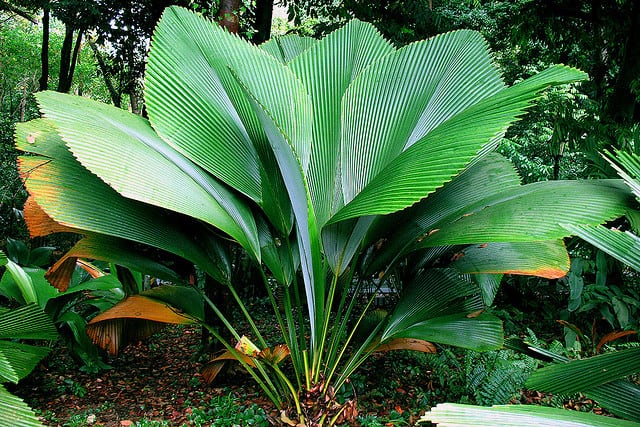Indonesia is one of the richest countries in the world for their natural resources, culture, and people. This place offers wide range of scenery to see, culture to experience, people to meet, food to eat, and unique creatures to see. Common trees in Indonesia can be one of those species that certain people keen to know more about. If you are a nature lover, natural-life seeker, or even a high value plant seeker, here we represent some information about what kind of trees that you might want to see while you’re in Indonesia.
Read other articles:
1.Cengkeh (Syyzygium aromaticum)
 Cengkeh is “cloves” in English. This plant is the most wanted one since a long time ago, probably since the Roman era. Previously, cloves or cengkeh has the higher values than gold in the world of commerce.
Cengkeh is “cloves” in English. This plant is the most wanted one since a long time ago, probably since the Roman era. Previously, cloves or cengkeh has the higher values than gold in the world of commerce.
Its fragrant fragrance was its special appeal that made many merchants from across the continents such as from Middle East, Europe, and so on, willing to cross the ocean just to find this precious gem that lived productively in Indonesia.
Maluku was once the only area that can grow fertile cengkeh that was hunted by international traders. And since then, cengkeh began to be cultivated in other area such as Guyana, Brasilia, and Zanzibar. Now, cengkeh still be as famous and useful to help people making delicious meals, drink, medicine, and cigarettes.
2. Pala (Myristica Fragrant Houtt)
 Pala is known internationally as “Banda Nutmeg”, which originally found in Banda Neira island, Maluku by tradesman that stopped by around that area.
Pala is known internationally as “Banda Nutmeg”, which originally found in Banda Neira island, Maluku by tradesman that stopped by around that area.
Banda Nutmeg has a lot of benefits besides its famous function as spice, such as traditional medicine to cure gastrointestinal problems, and its essential oil is widely used in canning, beverage and cosmetics industries.
Even, in 1667, English and Dutch once signed a “Treaty of Breda” that stated The Dutch chose to hand over Manhattan to the UK and exchange it for the island of Run, especially for nutmeg growing on the islands.
3. Sirih (Piper betle)
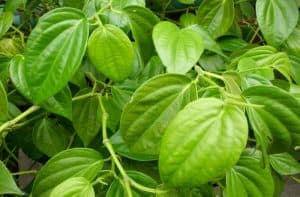 Sirih grows naturally around Riau islands province. It becomes Riau people favorite plants that appear on most of their cultural activities to welcome people, to cure diseases, to strengthen teeth, and so on.
Sirih grows naturally around Riau islands province. It becomes Riau people favorite plants that appear on most of their cultural activities to welcome people, to cure diseases, to strengthen teeth, and so on.
On the other hand, it contains numerous useful compounds and that’s why betel was quite expensive back then and is still, up until now.
4. Ulin (Eusiderxylon zwageri)
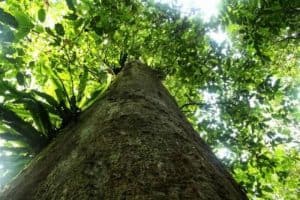 Ulin, or “Belian” as its famous nickname, is a common trees in Indonesia that grows in Kalimantan island. Ulin can be categorized as a giant tree species with height up to 30 meters and has 60-120 cm trunk diameters.
Ulin, or “Belian” as its famous nickname, is a common trees in Indonesia that grows in Kalimantan island. Ulin can be categorized as a giant tree species with height up to 30 meters and has 60-120 cm trunk diameters.
On the other hand, people search for this species because of its good and strong wooden quality.
5. Cendana (Santalum album L.)
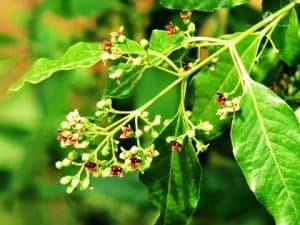 Cendana originally grows on Timor Island and Sumba Island of East Nusa Tenggara. Tome Pires in his Suma Oriental (1514) wrote that traders often say that “God created Maluku for cloves, Banda for nutmeg, and Timor for sandalwood”.
Cendana originally grows on Timor Island and Sumba Island of East Nusa Tenggara. Tome Pires in his Suma Oriental (1514) wrote that traders often say that “God created Maluku for cloves, Banda for nutmeg, and Timor for sandalwood”.
Cenda is one of those aromatic raw materials traders looking for, so it’s a common phenomenon that they often come to Indonesia for Cendana. Other benefits we can get from Cendana are it can be used as art materials, incense, talc skin powder, household utensil, and perfume.
6. Sarang Semut (Myrmecodia pendes)
 Sarang Semut, or “Ant Hill” in English, lives originally in Papua. Ants literally love to spend their time living inside holes inside this plant. Science experts classified this plant as an “epiphytes” which means that this plant usually grows by riding on other plants as their host plant.
Sarang Semut, or “Ant Hill” in English, lives originally in Papua. Ants literally love to spend their time living inside holes inside this plant. Science experts classified this plant as an “epiphytes” which means that this plant usually grows by riding on other plants as their host plant.
Furthermore, it has a really peculiar form that differentiate it from other plants and has several health benefit potential when being processed properly.
7. Kantong Semar (Nepenthes L.)
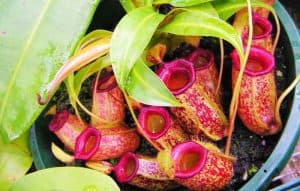 This plant internationally known as “tropical pitcher plant” because of its pitcher-like, unique form. It eats meat from insects, frogs, and other small animals around it.
This plant internationally known as “tropical pitcher plant” because of its pitcher-like, unique form. It eats meat from insects, frogs, and other small animals around it.
On the other hand, its height can be grown up to 20 meters and usually be parasite for its host plant. Kantong semar can easily be found around Sumatera and Kalimantan island.
8. Gaharu (Aquilaria spp.)
 Gaharu contains that unique mixture from wooden trees and certain fungus that somehow produces material with nice fragrant. So, not all of those Gaharu trees generally produces what most traders looking for.
Gaharu contains that unique mixture from wooden trees and certain fungus that somehow produces material with nice fragrant. So, not all of those Gaharu trees generally produces what most traders looking for.
Only ones with perfect intervention from enzyme from certain fungus will. That rotten wooden part inside Gaharu trunk can be extracted and turned into perfume, cosmetics, and pharmaceutical raw materials.
Then, another special function of that Gaharu fragrance is as incense for religious rituals for communities in Middle Eastern countries. This tree is a native species of Indonesia and many people are still looking for Gaharu because it has high selling point up until now.
9. Kapur Barus (Cinnamomum camphora)
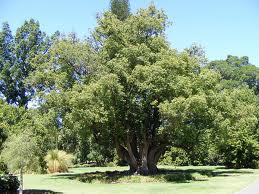 Kapur barus, or camphor in English, used to be an important raw material to help past society for pharmaceutical or ancient medicine, embalming mummy (mummy), medicine and perfumery.
Kapur barus, or camphor in English, used to be an important raw material to help past society for pharmaceutical or ancient medicine, embalming mummy (mummy), medicine and perfumery.
A lot of traders were looking for this kind of giant tree (up to 75 m) around its origin area around south part of Sumatera island because of its expensive cost. However, nowadays, tradition extraction of camphor has been substituted with synthesized turpentine oil.
10. Daun Payung (Johannesteijsmannia altifrons)
 In general this plant known as “Umbrella Leaf Palm”, according to its useful function that can substitute umbrella or roof to protects us from rain and sunlight.
In general this plant known as “Umbrella Leaf Palm”, according to its useful function that can substitute umbrella or roof to protects us from rain and sunlight.
On the other hand, it has strong sturdy and giant leaves that grows until it reaches 6 meters in length.
Meanwhile, Daun payung can be found in Kalimantan with ease.
11. Damar (Agathis labillardien)
 Damar has high economic value because of its latex that can be used as main raw material for several industries such as paper pulp, plastic coating products, textiles, paints, inks, plaster materials and lighters.
Damar has high economic value because of its latex that can be used as main raw material for several industries such as paper pulp, plastic coating products, textiles, paints, inks, plaster materials and lighters.
Damar is a good choice of plant to help us as greening plants in big polluted cities, too, because it is giant, quite adaptive and easy to plant and maintain.
12. Durian (Durio zibethinus)
 Most of durian trees are growing on Kalimantan island, although other areas might have another durian species living on it, too. This tree is phenomenal for its durian fruits that has strong smell and delicious flesh of fruit for those who like.
Most of durian trees are growing on Kalimantan island, although other areas might have another durian species living on it, too. This tree is phenomenal for its durian fruits that has strong smell and delicious flesh of fruit for those who like.
Indonesia is durian heaven, so it’s recommended to try durian if you haven’t got any chance too!
13. Banana (Musa acuminata)
 Musa acuminate is one of many species of bananas out there. The famous species is the one with edible yellowish banana fruits. This tropical tree can easily be found around any Indonesia islands, ans the price isn’t as high as you might find in other countries. Many people truly love it, and you should try too!
Musa acuminate is one of many species of bananas out there. The famous species is the one with edible yellowish banana fruits. This tropical tree can easily be found around any Indonesia islands, ans the price isn’t as high as you might find in other countries. Many people truly love it, and you should try too!
Those types of trees that have been mentioned earlier are common trees in Indonesia. Even, those are only several types among many other famous trees that live here, in Indonesia.
Not only trees that have so many functional abilities to help us with our everyday activities, Indonesia also have many beautiful other species such as flowers, fruits, birds, animals and so on that worth to see and experience yourselves. It is suggested to do internet surfing first before you visit Indonesia.
Read other related articles: Medicinal Plants of Indonesia – Famous Plants in Indonesia
Hopefully you gain new experience, insight and knowledge after visiting this exotic country. Having a holiday while learning new things can be fun, though!
